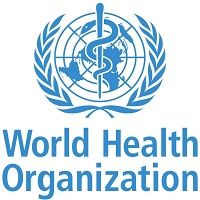5 New Hepatitis C Drugs Added to WHO "Essentials" List
The essential medicines list put out by the World Health Organization (WHO) now includes five new hepatitis C drugs that show great promise in curing the disease in millions of people. However, the WHO also warned financial stumbling blocks could greatly hinder efforts to make treatment equitable throughout the world.

The essential medicines list put out by the World Health Organization (WHO) now includes five new hepatitis C drugs that show great promise in curing the disease in millions of people. However, the WHO also warned financial stumbling blocks could greatly hinder efforts to make treatment equitable throughout the world.
Published May 8, the new edition of WHO’s Model List of Essential Medicines serves to “improve access to innovated medicines that show clear clinical benefits” and could greatly influence public health on a global scale, according to a WHO news release. The list, which is updated every two years and includes medicines that are verified for efficacy, safety and quality and evaluated for cost effectiveness, often guides governments and institutions to develop their own lists of essential medicines.
“When new effective medicines emerge to safely treat serious and widespread diseases, it is vital to ensure that everyone who needs them can obtain them. Placing them on the WHO Essential Medicines List is a first step in that direction,” said Margaret Chan, OBE MD, DSc, MScPH, FFPHM, JP, Director-General of the WHO.
Health officials estimate that 150 million people across the globe have hepatitis C, a blood-borne virus that often goes undetected for years while it inflames and slowly damages the liver. The disease kills roughly half a million people each year and is present in high and lower income countries alike, with higher concentrations in several middle- and low-income countries, according to the WHO release.
This year the committee in charge of the list emphasized an urgent need to promote equitable access to the new direct-acting oral antivirals to treat hepatitis C and to other highly effective medicines. The group includes recognized specialists from academia, research and the medical and pharmaceutical professions.
Until recently, typical treatment for hepatitis C involved antiviral medicine combined with interferon injections that frequently resulted in severe side effects. The new drugs approved since 2013, have fewer side effects, shorter treatment times and higher cure rates but health advocates worry that their price tag is so high that many patients won’t be able to afford treatment.
The five new hepatitis C medicines that were added to the list include sofosbuvir, marketed as Sovaldi by Gilead Sciences and daclatasvir, a Bristol-Myers Squibb drug that is approved in Europe but not the United States, as well as simeprevir, dasabuvir and ribavirin. Sovaldi sells for roughly $1000 a pill in the U.S., adding up to $84,000 for a full course 12-week treatment.
“Treatments for hepatitis C are evolving rapidly, with several new, highly effective and safe medicines on the market and many in the development pipeline,” said Marie-Paule Kieny, WHO assistant director-general for health systems and innovation. “While some efforts have been made to reduce their price for low-income countries, without uniform strategies to make these medicines more affordable globally the potential for public health gains will be reduced considerably.”
The organization also added 16 new cancer medicines and tuberculosis-fighting antibiotics to the list.
“It is important to understand that the Essential Medicines List is the starting block and not the finishing line,” concluded Kieny. “Its purpose is to provide guidance for the prioritization of medicines from a clinical and public health perspective. The hard work begins with efforts to ensure that those medicines are actually available to patients.”